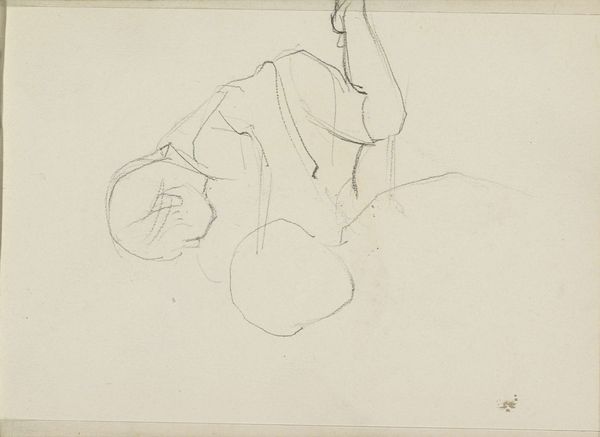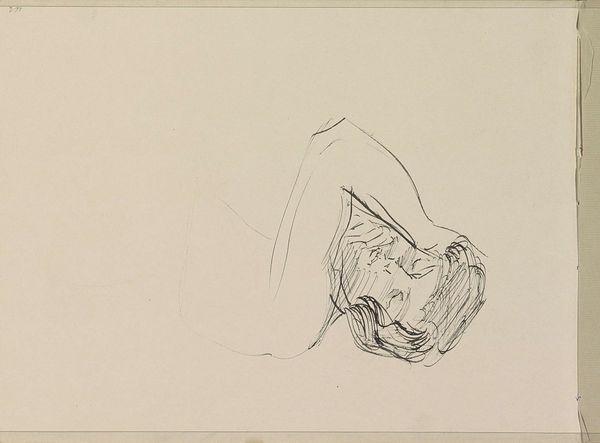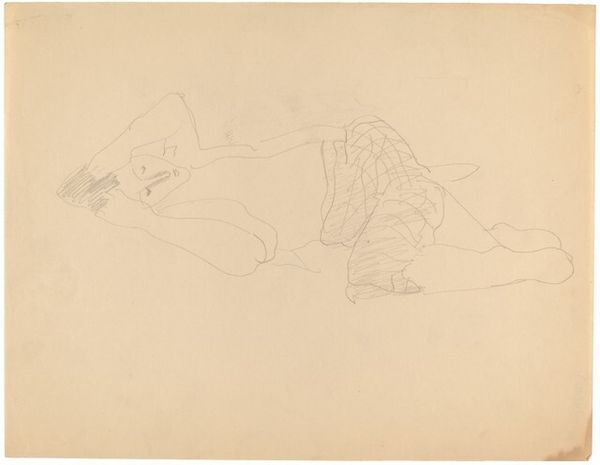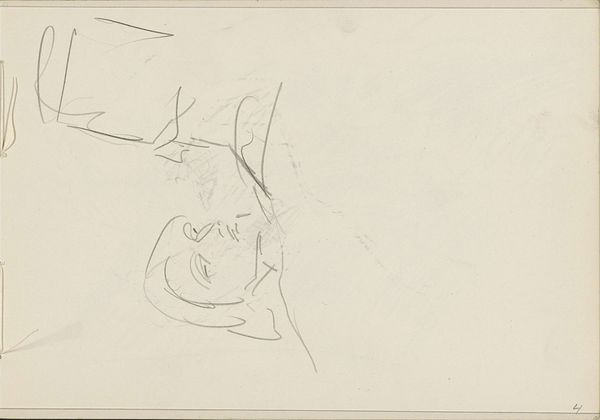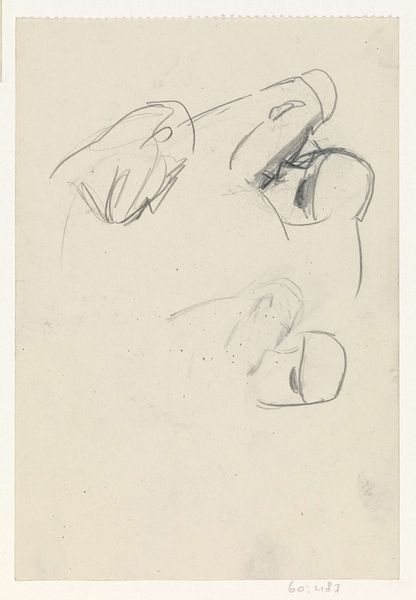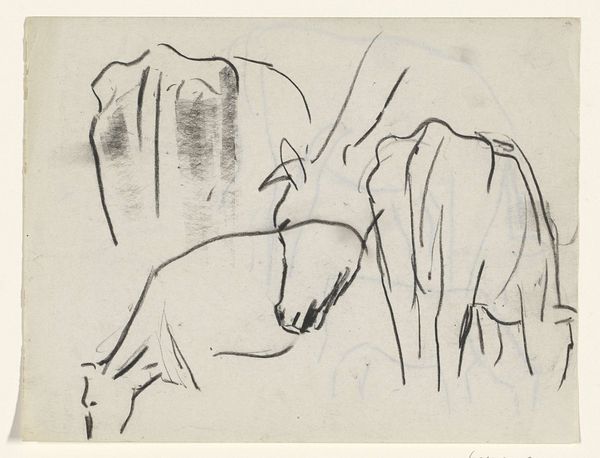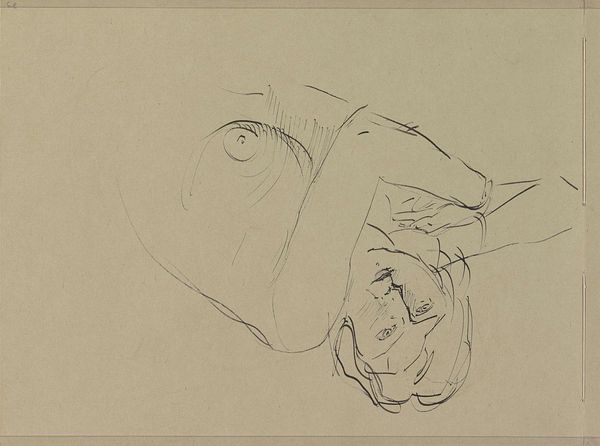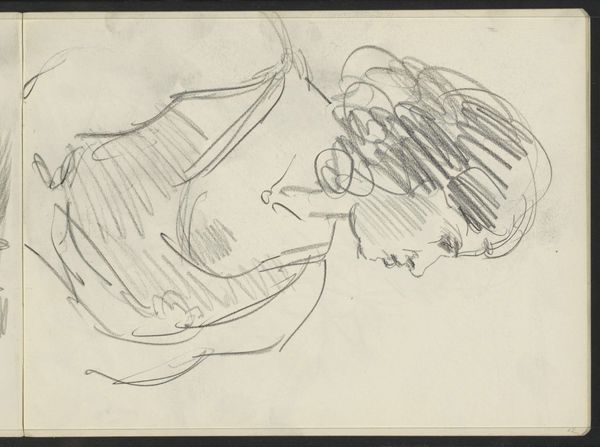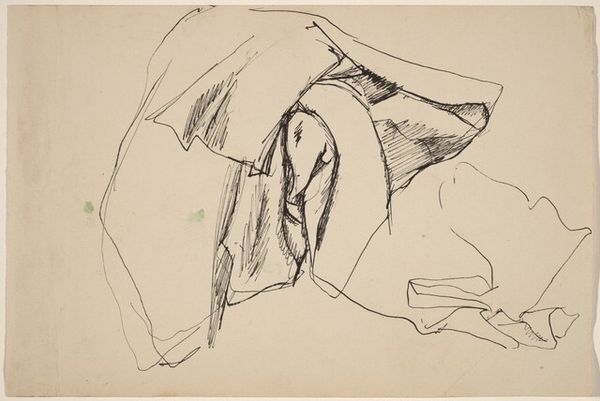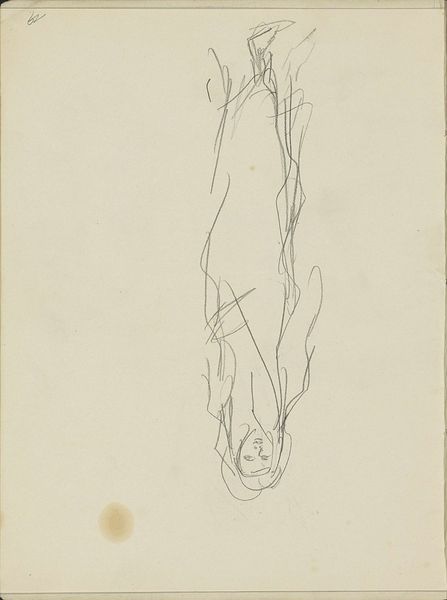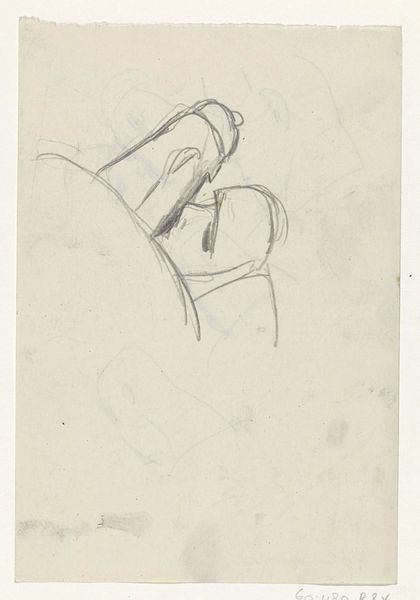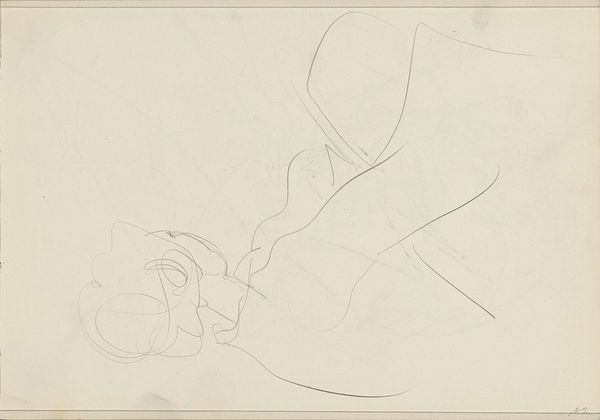![Untitled [study of legs and buttocks] [verso] by Richard Diebenkorn](/_next/image?url=https%3A%2F%2Fd2w8kbdekdi1gv.cloudfront.net%2FeyJidWNrZXQiOiAiYXJ0ZXJhLWltYWdlcy1idWNrZXQiLCAia2V5IjogImFydHdvcmtzLzYyZWMwYzRjLTdmNmEtNGZhMi1iYWM2LTgzZTI4MjM3NGFlNi82MmVjMGM0Yy03ZjZhLTRmYTItYmFjNi04M2UyODIzNzRhZTZfZnVsbC5qcGciLCAiZWRpdHMiOiB7InJlc2l6ZSI6IHsid2lkdGgiOiAxOTIwLCAiaGVpZ2h0IjogMTkyMCwgImZpdCI6ICJpbnNpZGUifX19&w=3840&q=75)
drawing, pencil
#
drawing
#
figuration
#
bay-area-figurative-movement
#
pencil
#
nude
Dimensions: overall: 52 x 17.7 cm (20 1/2 x 6 15/16 in.)
Copyright: National Gallery of Art: CC0 1.0
Curator: Before us is Richard Diebenkorn’s “Untitled [study of legs and buttocks] [verso]”, created between 1955 and 1967, rendered in pencil. What are your first thoughts? Editor: My initial impression is one of both tension and serenity. The bold lines create a defined, almost sculptural form against the fainter ghost of another figure. There’s an underlying sensuality. Curator: Sensuality definitely comes through. But looking at the medium, pencil on paper, a common, accessible material, suggests to me an interest in the basic elements of art making, challenging assumptions about the artistic value of process. Editor: I see what you mean, though the recurring image of the nude, which this is clearly a study of, carries significant symbolic weight through art history. Think of the Venus figures, goddesses of love and beauty. What echoes might Diebenkorn be exploring here? Curator: Well, the use of the "verso" indication suggests the work exists as an afterthought, a secondary action, perhaps deflating any attempt at high-minded iconic representation. I'm also intrigued by how the economic accessibility of these materials shapes both process and form. Diebenkorn’s choice communicates, in some ways, to his social milieu. Editor: True. Though these lines and gestures still echo something fundamental. Consider how the body itself, as a recurring image throughout history, has been used to represent emotion, identity, and our relationship with the world around us. Are those figures languid? Defiant? Curator: Interesting… To think the rapid, unassuming marks, in combination with this readily available paper stock, were done, in a sense, without pressure from established art economies... that could imbue them with defiance. Editor: Perhaps this seeming casualness belies the deeper significance he gives the form, imbuing his modern lines with archetypal weight. We both find meaning through his lines, though traveling different interpretive pathways! Curator: Indeed! For me, it reveals much about his engagement with materials as carriers of intent within the context of his practice. Editor: And for me, those same lines evoke art historical lineages in order to ask questions about humanity.
Comments
No comments
Be the first to comment and join the conversation on the ultimate creative platform.
